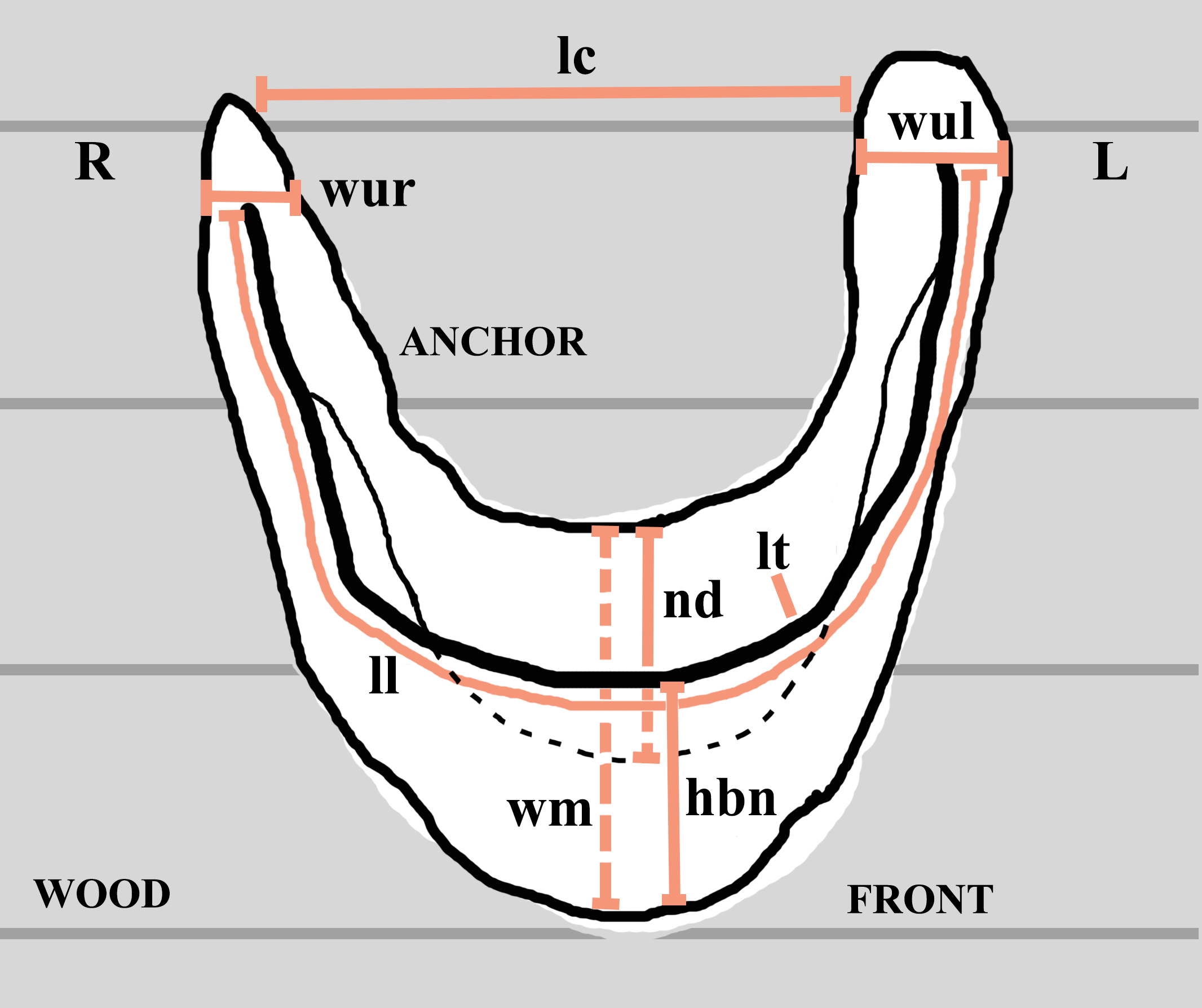Nest Position and Morphology of Germain's Swiftlet (Aerodramus germani) in a Low-Cost Swiftlet Master House, Faculty of Science and Technology, Prince of Songkla University, Pattani
Keywords:
Germain's Swiftlet , edible bird's nest , Swiftlet Houses , morphological nestAbstract
Background and Objectives : The Germain’s Swiftlet (Aerodramus germani) is a protected wildlife species in Thailand. It inhabits and constructs nests for reproduction in natural limestone caves on islands as well as in anthropogenic structures. This species is an aerial insectivore, capturing small flying insects in midair as its primary food source. Its nests composed of salivary secretions produced during the breeding season. These nests are highly valuable. Nest collection must be authorized under the Swiftlet Nest Duty Act B.E. 2540 (1997). From the study on the influence of nest position on reproductive success in a large colony, findings indicate that selecting an optimal nesting site within the colony can mitigate risks and enhance nest protection against various factors, including environmental conditions, intraspecific competition, and predation. Previously, there have been no studies on the position and morphology of the nests from swiftlet house. Therefore, this study is academically significant and serves as a guideline for future research to identify the nest-building locations of these birds and the morphology of their nests.
Methodology : The study area was divided within the low-cost Swiftlet Master House at the Faculty of Science and Technology, Prince of Songkla University, Pattani Campus, into nine sub-areas: four on the right side and five on the left side. Data collection included nest counts, nest positions, temperature, and relative humidity, conducted once per month from July to November 2022. Additionally, nests were collected to classify nest types and quantify their numbers. A total of 105 nests, collected on July 15, 2022, were categorized based on their characteristics and morphology. Nine morphological characteristics of the nests were measured as follows: 1) nest width upper left side region where it attaches to the wooden wall, 2) nest width upper right side region where it attaches to the wooden wall, 3) nest width middle area where it attaches to the wooden framework, 4) nest depth, measured from the bottom of the cup to the rim of the nest, 5) height bottom nest, measured from the midpoint of the nest's base to the rim, 6) length of the nest clearance, measured from the uppermost point on the left and right sides where it attaches to the wooden wall. 7) lip length, measured from the far left edge of the rim to the far right edge of the rim, 8) nest lip thickness and 9) nest weight. The nine morphological characteristics were statistically analyzed for differences using Duncan's New Multiple Range Test, employing the SAS statistical software package.
Main Results : From July to November 2022, a total of 59 new nests of Germain’s Swiftlet (Aerodramus germani) were recorded. The left section of the study area had the highest number of nests (32), with the highest concentration observed in sub-area L1 (19 nests). In August, nest construction peaked, with 31 new nests (52.54%), of which 15 were located in sub-area L1. The distribution of nests within the low-cost Swiftlet Master House was structured into four distinct colonies. The largest colony, encompassing sub-areas L1 and R1, contained 67 nests (49 in L1 and 18 in R1), located in the innermost section of the house. The second-largest colony, covering sub-area L5, consisted of 53 nests and was positioned at the outermost section near the entrance/exit of the house. Morphological analysis of the nests collected on July 15, 2022 (n = 105), revealed that all nests were white and classified into three types: simple corner-shaped/triangular-shaped, which were the most abundant (72 nests, 68.57%), followed by cup-shaped/cradle-shaped (22.85%), and compound corner-shaped. The analysis of the relationship between the nine measured morphological characteristics among these three nest types, using pairwise comparisons, indicated that only the nest lip thickness differed significantly among cup-shaped/cradle-shaped nests, simple corner-shaped/triangular-shaped nests, and compound corner-shaped nests (p < 0.05). For the remaining characteristics, at least one pair of nest types showed no significant differences. The internal temperature of the swiftlet house ranged from 30.33°C to 32.90°C, while the relative humidity averaged between 79.00% and 88.40%.
Conclusions : In sub-area L1, the highest nest-building activity was observed, accounting for 32.20%, with a total of 19 new nests, averaging 4.75 nests per month. In August, the birds built the most new nests, totaling 31 nests (52.54%). The distribution of nests within the low-cost Swiftlet Master House was structured into four distinct colonies, with the largest colony encompassing sub-areas L1 and R1. Regarding nest morphology, the most common nest type was the simple corner-shaped/triangular-shaped nest, with 72 nests, accounting for 68.57%. Analysis of the relationship between morphological characteristics revealed that only the nest lip thickness of the boat-shaped nests, simple corner-shaped nests, and multi-layered corner-shaped nests showed a statistically significant difference (p<0.05). Other morphological characteristics had at least one pair of nest types with no significant differences in the analysis results. The temperature inside the birdhouse was 0.98-1.50°C higher than the birds' preferred temperature, while the relative humidity was within the preferred range.
References
Brooke, R.K. (1970). Taxonomic & evolutionary notes on the subfamilies, tribes, genera & subgenera of the swifts (Aves: Apodidae). Nomenclator Zoologicus, 9(2), 13–24.
Buatip, S., Karntanut, W., & Swennen, C. (2013). Nesting period and breeding success of the Little Egret Egretta garzetta in Pattani province, Thailand. Forktail, 29, 120–123.
Delacour, J. (1947). Birds of Malaysia (1st ed). New York: Macmilla Company.
Dumsrisuk, Y., Chimchome, V., & Pongpattananurak, N. (2016). Breeding biology of Pale-Rumped Swiftlet (Aerodramus germani Oustalet) at Sutiwat Wararam Temple, Mueang District, Samut Sakhon Province. Journal of Wildlife in Thailand, 23(1), 63–75. (in Thai)
Hilaluddin, S.J.N., & Shawl, T.R. (2003). Nest site selection and breeding success by Cattle Egret and Little Egret in Amroha, Uttar Pradesh, India. Waterbirds, 26, 444–448.
Koon, L.C., & Cranbrook, E. (2002). Swiftlets of Borneo: Builder of Edible Nests (2nd ed.). Borneo: Natural History Publications Malaysia.
Langham, N. (1980). Breeding biology of the edible-nest swiftlet Aerodramus fuciphagus. International Journal of Avian Science, 122(4), 447-461.
Lau, A., & Melville, D.S. (1994). International trade in swiftlet nests with special reference to Hong Kong (1st ed.). Cambridge: Traffic International.
Leaksook, N. (2020). The swiftlet farming business in the Thailand (1st ed.). Pathum Thani: Vision Prepress Company Limited. (in Thai)
Lueangthuwapranit, C. (2019). Construction of Low-Cost Edible-Nest Swiftlet Houses (1st ed). Pattani: Pattani info Co.,Ltd. (in Thai)
Lueangthuwapranit, C., Bovornruangroj, N., & Kraiprom, T. (2021). A study of a low-cost Edible-Nest Swiftlet Master House. Journal of Sustainability Science and Management, 16(4), 99-112.
Medway, L. (1996). Studies on the biology of the edible-nest Swifts of South-East Asia Malayan. Natural Journal, 22, 57-63.
Nabhitabhata, J., Lekagul, K., & Sanguansombat, W. (2007). Dr. Boonsong's Bird Guide of Thailand (1st ed). Bangkok: Darnsutha Press. (in Thai)
Pakkem, K. (2022). Management of an artificial swiftlet habitat (1st ed). Pathum Thani: Vision Prepress Company Limited. (in Thai)
Phonak, P. (2004). Breeding biology of germain's swiftlet (Collocalia germani Oustalet, 1878) in Mu Koh Chang National Park, Trat Province. Bangkok: Kasetsart University. (in Thai)
Pongchu, N. (1985). Biology of edible-nest swiftlet, Collocalia fuciphaga (Thunberg, 1821). Bangkok: Kasetsart University. (in Thai)
Pongpattananurak, N., Phumsathan, S., Ruksakul, D., & Toyting, J. (2018). Guidelines for Implementing Protocols for Good Swiftlet House Practices. Bangkok: Kasetsart University. (in Thai)
Pongpattananurak, N., Phumsathan, s., Dumsrisuk, Y., Somleewong, T., & Rasri, P. (2021). Basic knowledge of edible-nest swiftlet for sustainable biodiversity utilization. Thai Journal of Forestry, 40(1), 167-184. (in Thai)
Pothieng, D. (2004). Ecology and distribution of edible-nest swiftlet (Collocalia fuciphaga). Bangkok: Wildlife Research Division, Department of National Parks, Wildlife and Plant Conservation. (in Thai)
Ratree, P. (2003). Habitat type, nesting and fledging development of black-nest Swiftlet (Collocalia maxima Hume, 1878) around Ko Chang national park. Bangkok: Kasetsart University. (in Thai)
Robson, C. (2008). A Field Guide to the Birds of Thailand and South–East Asia (1st ed). Bangkok: Asia Books Co.,Ltd.
Royal Thai Government Gazette. (1997). No.114, Article 56A. (in Thai)
Royal Thai Government Gazette. (2019). No.136, Article 71. (in Thai)
SAS. (1990). SAS/STATTM User’s Guide (Release 6.03). United States: SAS Inst., Inc.
Vergara, P., & Aguirre, J.I. (2006). Age and breeding success related to nest position in a White stork Ciconia ciconia colony. Acta Oecologica, 30(3), 414-418.

Downloads
Published
How to Cite
Issue
Section
License
Copyright (c) 2025 Faculty of Science, Burapha University

This work is licensed under a Creative Commons Attribution-NonCommercial-NoDerivatives 4.0 International License.
Burapha Science Journal is licensed under a Creative Commons Attribution-NonCommercial-NoDerivatives 4.0 International (CC BY-NC-ND 4.0) licence, unless otherwise stated. Please read our Policies page for more information



